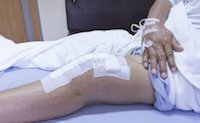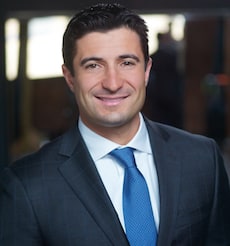legal resources necessary to hold negligent facilities accountable.
Milwaukee Nursing Home Abuse Lawyer
 Elderly residents in nursing homes are particularly susceptible to abuse and neglect, which can lead to severe injuries, emotional distress, and, in some cases, premature death. This neglect often stems from a failure to meet primary care standards, resulting in a breach of trust and safety for residents and their families.
Elderly residents in nursing homes are particularly susceptible to abuse and neglect, which can lead to severe injuries, emotional distress, and, in some cases, premature death. This neglect often stems from a failure to meet primary care standards, resulting in a breach of trust and safety for residents and their families.
Nursing Home Law Center, LLC focuses on aiding victims of nursing home abuse through expert legal advice and support. Our team of skilled nursing home abuse lawyers is adept at handling these sensitive cases, ensuring that victims receive the justice and compensation they deserve.
The Dangers of Nursing Home Abuse and NeglectNursing facility abuse and neglect in the Milwaukee area present severe risks to the well-being of vulnerable elderly residents. These dangers stem from a variety of abusive behaviors and negligent actions that significantly compromise the quality of life and safety of those in care facilities. The role of a Milwaukee nursing home abuse lawyer is critical in addressing these violations and seeking justice for the affected.
Nursing Home StatisticsThe Centers for Medicare and Medicaid Services (CMS) is pivotal in monitoring the quality of nursing home care across the United States. According to the latest statistics from CMS in January 2024, 39% of the 325 nursing homes in Wisconsin were rated as "below average" or "much below average." This alarming figure underscores the urgent need for vigilance in addressing nursing home abuse and neglect issues.
Several nursing facilities in Wisconsin have come under scrutiny for inspectors citing them for abuse. Among these facilities are:
- Chi Franciscan Villa
- Muskego Health and Rehabilitation Center
- Silver Springs Health Care Center
- St. Ann Health and Rehabilitation Center
These findings shed light on the pervasive challenges faced by nursing facility residents and their families, reinforcing the importance of addressing nursing facility abuse and neglect promptly and effectively.
Why Government Agencies Investigate Nursing Home Negligence and AbuseGovernment agencies, such as CMS, conduct surveys, inspections, and investigations into nursing homes for a crucial reason. When nursing home patients and their families file formal complaints of abuse and neglect, these agencies step in to ensure the well-being of vulnerable individuals.
These investigations aim to uncover instances of nursing facility abuse, which can take various forms, including:
- Physical abuse
- Emotional abuse
- Sexual abuse
- Financial exploitation
- Nursing home negligence
Wisconsin elder abuse attorneys and government agencies recognize the need to provide a safe environment for nursing home patients. Cases of attempted sexual assault, financial exploitation, and other forms of abuse can have severe consequences for elderly individuals. Families and caregivers intentionally harming nursing home residents must be held accountable.
Definition of Senior Adult AbuseElderly abuse in Milwaukee nursing home facilities involves intentional acts or neglect that significantly affect vulnerable adults. This abuse, often perpetrated by caregivers or staff members, ranges from physical harm to emotional manipulation, often leaving the elderly person feeling helpless and scared.
Forms of abuse in care settings include the following:
- Physical Abuse: This form of abuse is characterized by visible injuries such as bruises, cuts, or broken bones when a caregiver intentionally harms the nursing home resident. What is particularly alarming is the frequent lack of explanation for these injuries or the provision of inconsistent explanations by staff.
- Emotional Abuse: The presence of depression, emotional outbursts, withdrawal, or fear in elderly residents, especially noticeable in the presence of specific staff or other residents, is a strong indicator of emotional abuse. Emotional abuse can be as damaging as physical abuse, though it is often less visible.
- Sexual Abuse: Indications here include not only physical signs but also sudden changes in behavior, which may suggest non-consensual sexual contact or unwanted touching. Signs of sexual abuse require prompt and thorough investigation due to their serious nature harming the disabled or elderly person.
- Financial Abuse: This type of abuse often manifests through unexplained withdrawals from bank accounts, unexpected changes in wills, stealing bank account information, or missing personal property from the resident's room. These signs point towards potential exploitation and require immediate attention.
- Neglect: Neglect is indicated by signs of poor hygiene, malnutrition, or untreated medical conditions. This suggests a lack of adequate care, possibly due to negligence or medical malpractice within the care facility.
Recognizing these signs is essential for protecting elderly individuals in care settings and ensuring their safety and dignity.
Recognizing Signs of AbuseAbuse in nursing homes is a serious concern, impacting the well-being and safety of elderly residents. Recognizing the signs of abuse is the first step toward safeguarding vulnerable individuals from harm.
The responsibility to identify these signs often falls on family members and friends, as many victims may be unable or unwilling to report the abuse themselves.
In addition to the physical signs like unexplained injuries and behavioral changes, there are other indicators to be aware of. For example, an abrupt change in eating habits or a sudden reluctance to speak in the presence of nursing home staff can be warning signs.
Emotional withdrawal, fearfulness, or a sudden change in financial circumstances may indicate something is amiss. The family needs to remain alert and responsive to these signs, as they could point to deeper issues of neglect or abuse within the living facilities.
To ensure the safety and well-being of your loved one, it is crucial to stay informed about the common signs of abuse and take immediate action if abuse is suspected.
This can include seeking medical attention, documenting the signs of abuse, and considering legal options such as a free consultation with a law firm experienced in elder neglect and nursing home abuse cases. Remember, recognizing and addressing these signs early can make a significant difference in the life of a nursing home resident.
Common Signs of Abuse in Nursing Homes:- Unexplained broken bones, bruises, or cuts
- Sudden mood changes, such as withdrawal or aggression
- Fearfulness or anxiety, particularly around certain staff members
- Unusual changes in financial situations, such as unexpected withdrawals or changes in life insurance policies
- Neglect of personal hygiene or basic needs
- Noticeable signs of malnourishment or dehydration
- Reluctance to speak or communicate, especially in the presence of caregivers
- Unexplained changes in medication or lack of adherence to medical prescriptions
- Isolation from friends or families
- Evidence of unauthorized transactions or changes in legal documents, such as wills or power of attorney agreements
Wisconsin law provides a robust legal framework to protect nursing home patients from abuse and neglect. Understanding these laws and the rights of residents is essential for ensuring their safety and dignity within these facilities.
Wisconsin Laws on Elder AbuseWisconsin's elderly abuse laws specifically address the protection of nursing home patients. These laws define abuse, outline the responsibilities of care facilities, and establish penalties for violations, ensuring a safe environment for the elderly.
Nursing Facility Resident RightsResidents of nursing facilities in Wisconsin have legal entitlements that ensure proper treatment and care. These rights include the right to privacy, freedom from abuse and neglect, and access to essential health services. Violations of these rights warrant legal action.
Role of Nursing Home Abuse LawyersMilwaukee nursing abuse lawyers play a pivotal role in advocating for victims and their families. Their expertise is invaluable in navigating the complexities of senior adult abuse cases and seeking rightful compensation.
Advocating for Victims and FamiliesIn cases of Milwaukee nursing home abuse, the role of a dedicated lawyer is pivotal in advocating for the rights and well-being of victims and their families. These legal professionals, especially in Milwaukee, are equipped with the expertise and compassion necessary to navigate the complex arena of elderly abuse law.
This advocacy is vital in bringing to light the often-overlooked issues of nursing home neglect and abuse, thereby contributing to the greater effort of improving standards in assisted living facilities and nursing homes.
Legal Assistance for Financial CompensationPursuing financial compensation in cases of nursing facility abuse is a complex process, requiring a deep understanding of the law and the nuances of each individual case. Our nursing home abuse attorneys specialize in identifying and quantifying the losses suffered due to abuse or neglect. This includes:
- Tangible costs: Medical bills, additional nursing care or physical therapy
- Intangible costs: Emotional damages such as pain and suffering and loss of enjoyment of life for the elderly loved one
- Punitive damages: Aimed at penalizing particularly egregious conduct by nursing home staff or management
Furthermore, a Milwaukee nursing home abuse lawyer from our law firm helps families explore compensation for all damages resulting from abuse. By securing financial compensation, lawyers not only provide relief to victims and their families but also send a strong message about the consequences of elder neglect and abuse, thereby promoting better care and treatment in Milwaukee nursing homes.
Reporting and Addressing Nursing Home AbuseReporting and addressing nursing home abuse in Milwaukee is a critical step toward stopping abuse and preventing future incidents. It involves understanding the proper channels for reporting and the process of substantiating abuse claims.
How to Report Suspected AbuseSuspected abuse in Milwaukee nursing homes should be reported promptly and is crucial in protecting vulnerable residents. This can be done through local authorities, including the following:
- Adult Protective Services (APS): APS specializes in protecting vulnerable adults. It investigates reports of abuse, neglect, or exploitation, including those occurring in nursing facilities.
- Aging and Disability Resource Centers (ADRCs): ADRCs provide support and guidance to older adults and their families, aiding in addressing concerns related to senior care.
- Department of Health Services (DHS) oversees Wisconsin healthcare facilities. It also addresses complaints regarding nursing home neglect and abuse.
- Legal Action of Wisconsin: This organization offers legal assistance to low-income individuals, including nursing home patients or their families, seeking legal remedies for abuse or neglect.
- Office of the Long-Term Care Ombudsman: This office advocates for residents' rights and assists in resolving issues within long-term care facilities, ensuring their safety and well-being.
- Wisconsin Coalition for Advocacy: This non-profit organization is dedicated to protecting the rights of individuals with disabilities. It holds Milwaukee nursing homes accountable through advocacy and legal action.
- Wisconsin Department of Justice - Medicaid Fraud Control Unit: This unit conducts investigations and prosecutions of Medicaid fraud, including cases involving nursing home neglect or abuse.
Proving abuse often requires gathering substantial evidence. This may include medical records, photographic evidence, and testimonies from the staff or other residents. A thorough investigation is essential for building a strong case.
Choosing the Right Legal RepresentationSelecting the right Milwaukee nursing home abuse lawyer is critical for effectively addressing abuse and neglect. The choice of lawyer can significantly impact the outcome of the legal process.
Criteria for Selecting a Nursing Facility Abuse LawyerWhen choosing a lawyer, consider their qualifications and experience handling abuse cases. A lawyer with a proven track record in similar cases and thorough knowledge of Wisconsin elder abuse laws is preferable.
Our nursing home abuse attorneys offer a free consultation to evaluate potential cases. This initial meeting allows the abused individual's family member or personal representative to discuss the case's specifics and understand their legal options.
Contact our nursing home abuse lawyers at (800) 926-7565. Our law firm accepts all Milwaukee nursing home abuse or neglect cases on a contingency fee basis. This means we will pursue legal action on your behalf, and you will only pay our fees after your Milwaukee nursing home abuse lawyer wins your case.
 Milwaukee County, Wisconsin Nursing Home Injury Lawyer Nursing Home Law Center LLC Home
Milwaukee County, Wisconsin Nursing Home Injury Lawyer Nursing Home Law Center LLC Home
